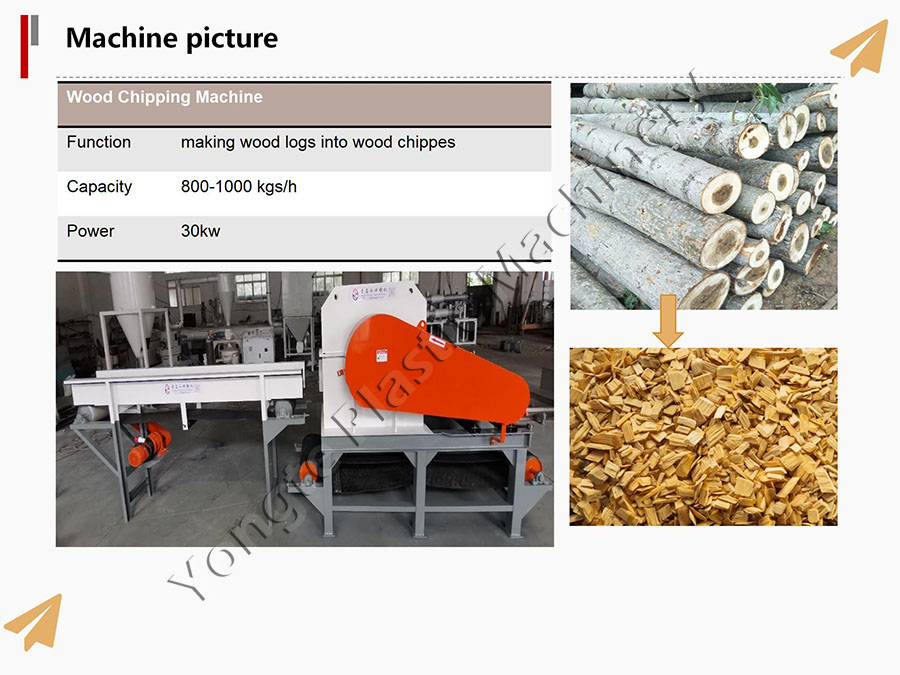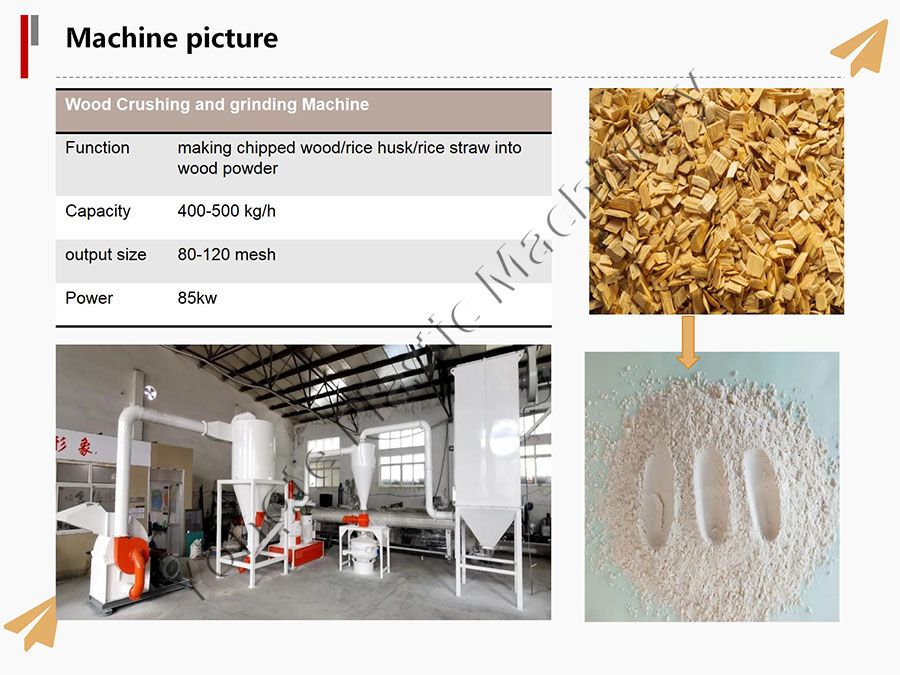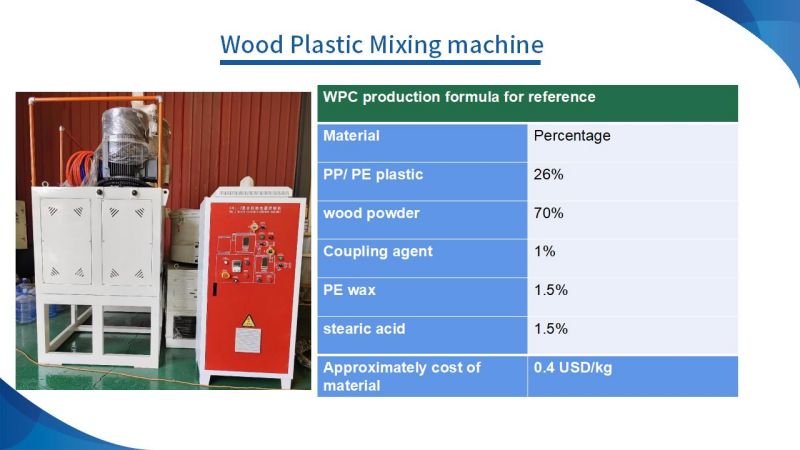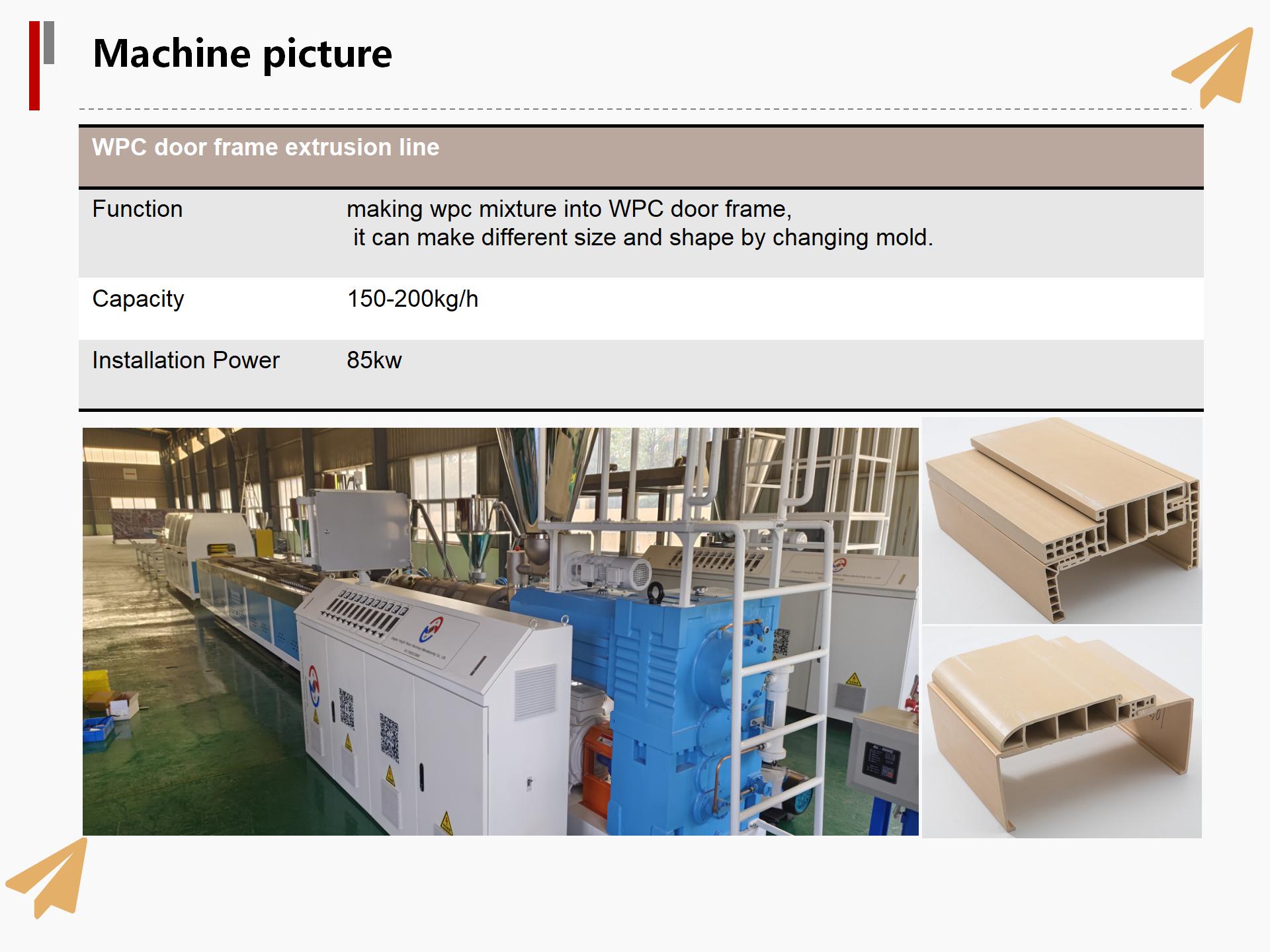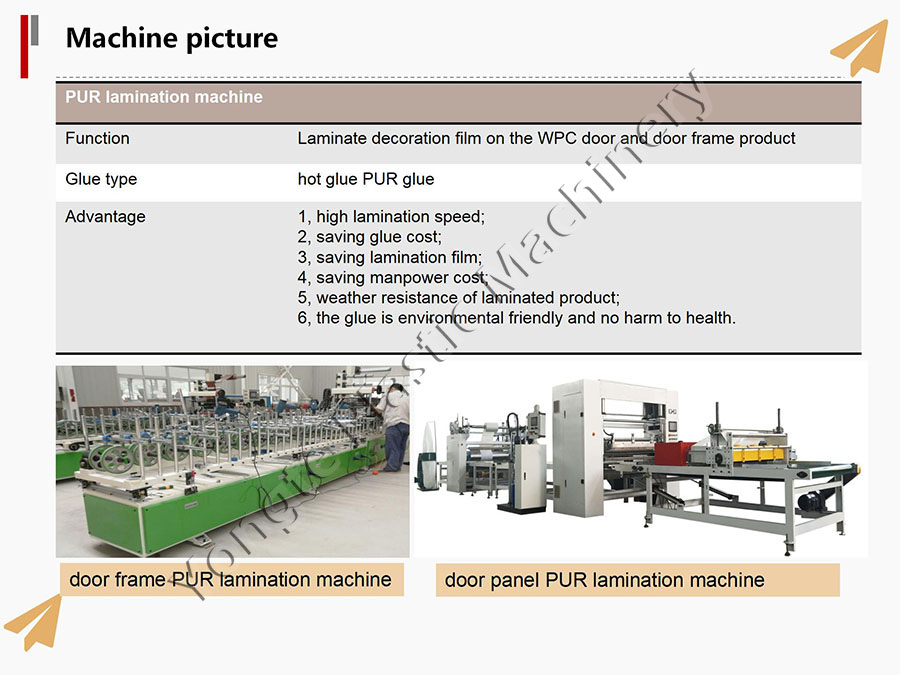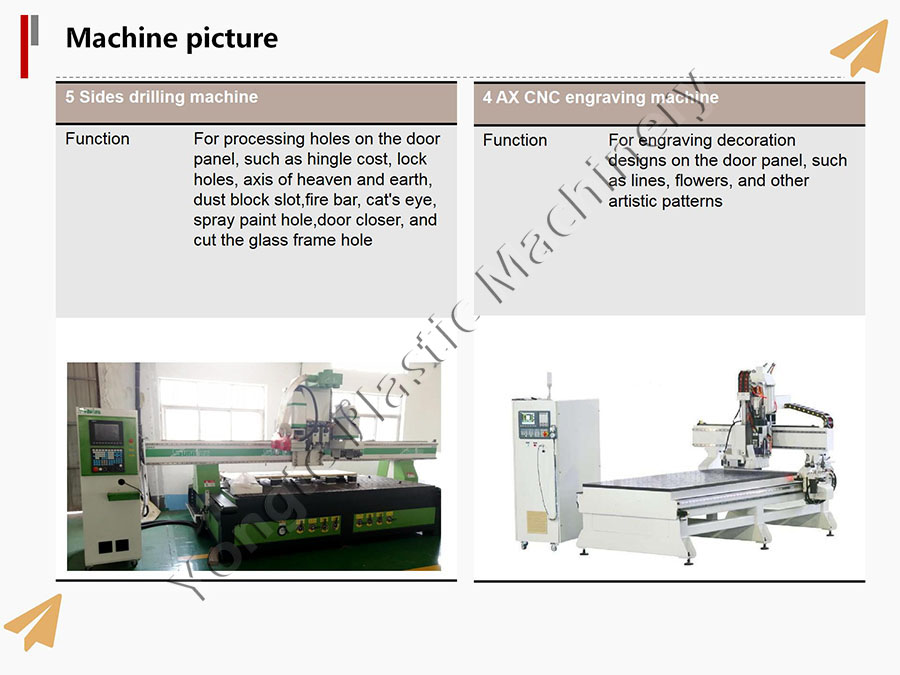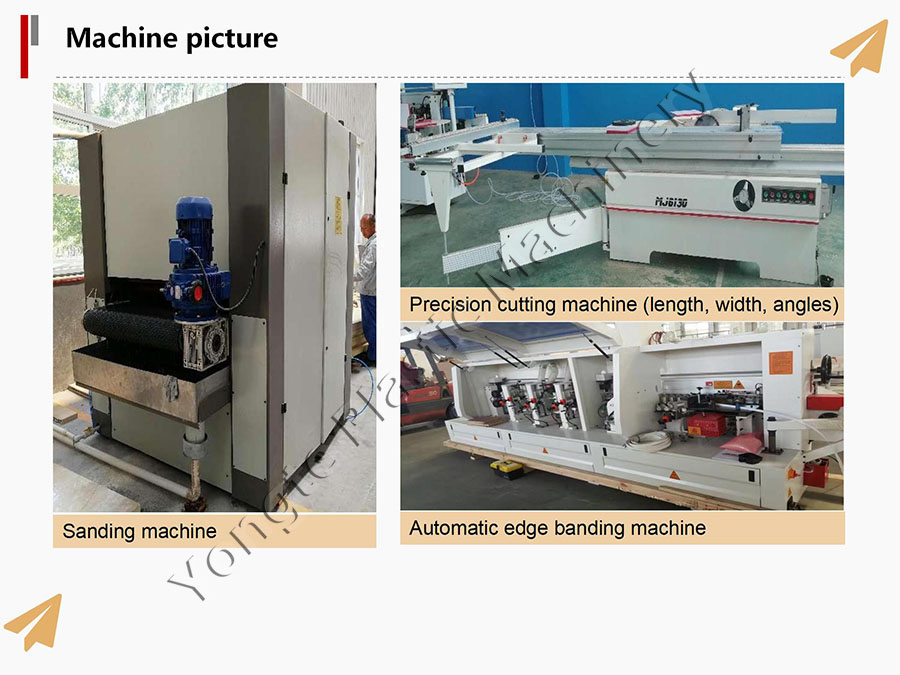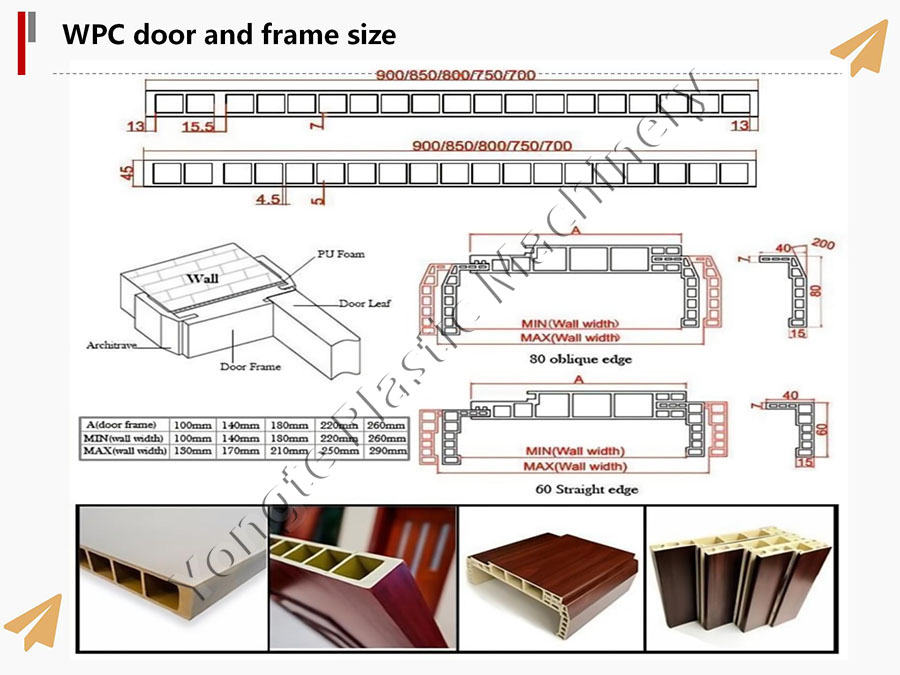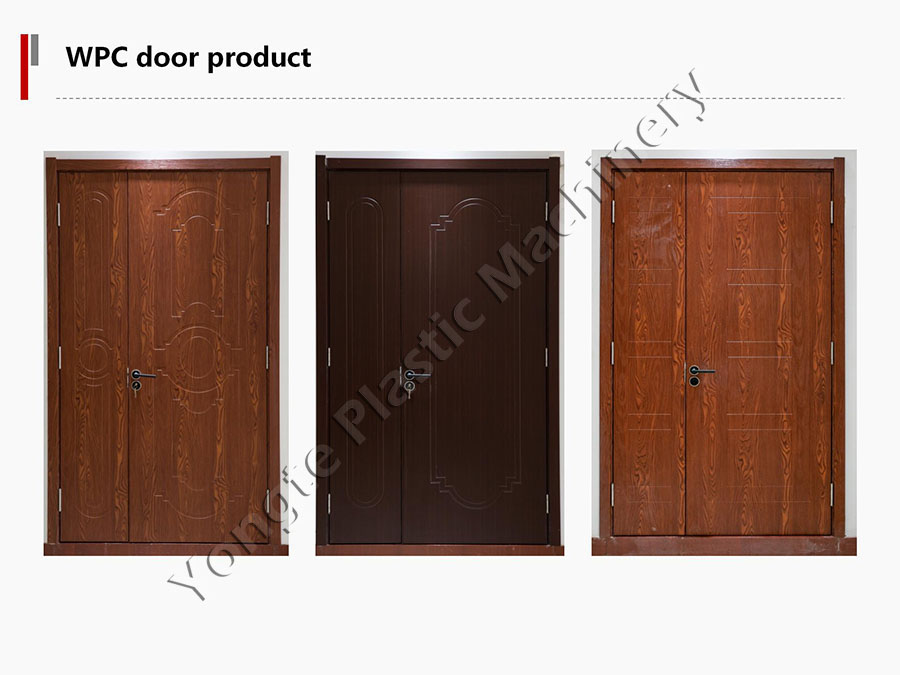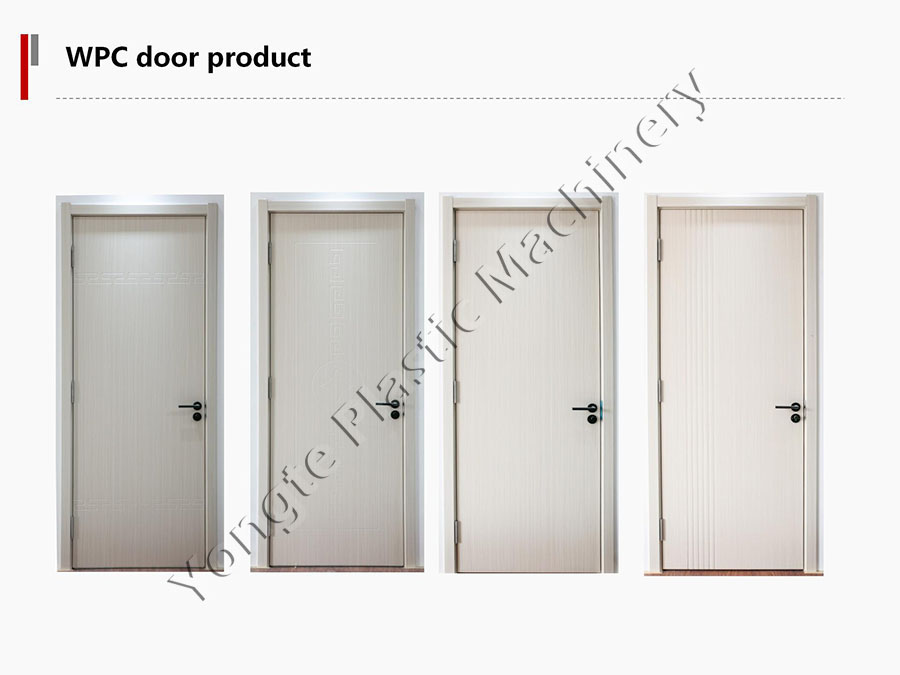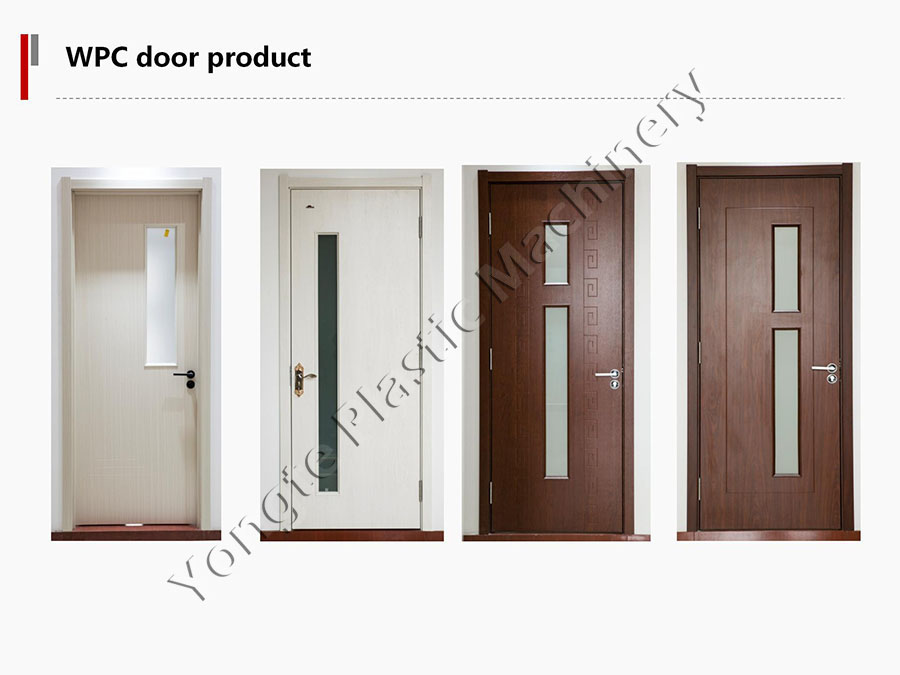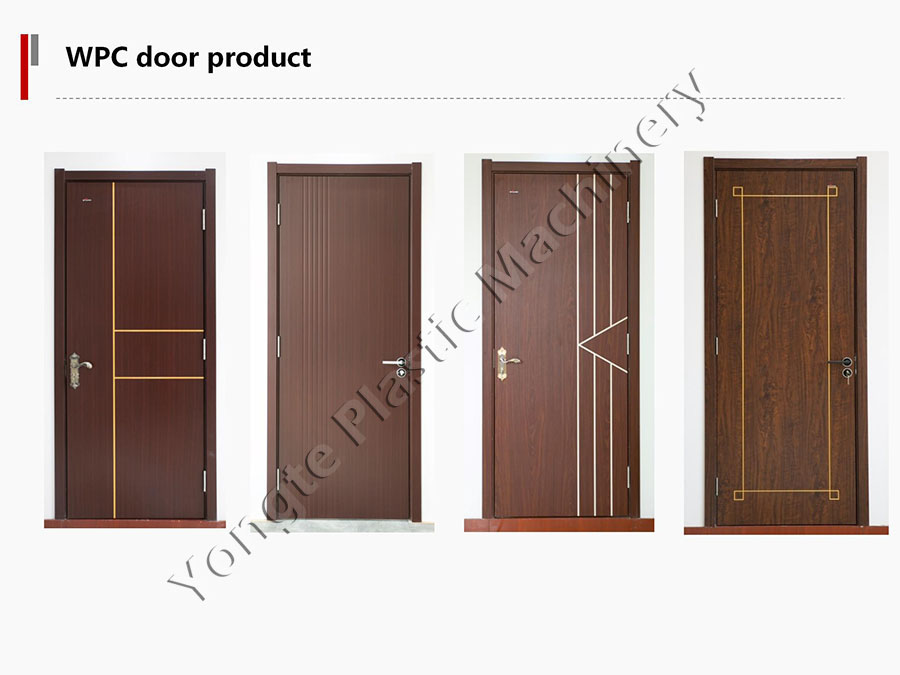Yonte is committed to providing high quality WPC door profile equipment to meet the needs of business owners and entrepreneurs. Our equipment is famous for its good quality, good service, stable production, mature formula, advanced technology, low maintenance cost, long service life, high efficiency, energy saving, environmental protection and other characteristics.
1. Prepare raw materials
The raw materials of wood-plastic doors mainly include wood flour, plastics, additives and so on. These raw materials need to be precisely propored and pre-treated to ensure that the produced wood-plastic doors have good performance and stable quality.
2. Mix and stir
The prepared raw materials are sent into the mixing mixer for full mixing and mixing. This process ensures that the raw materials are fully and evenly mixed, laying a good foundation for the subsequent molding process.
3. Extrusion molding
After mixing and stirring, the wood-plastic composite material is fed into the extrusion press, and under the action of high temperature and high pressure, it is extruded by the mold. In this process, the wood-plastic composite material is molded into a semi-finished product with a specific shape and size.
4. Cool and set
The semi-finished product after extrusion molding needs to be cooled to ensure the stability of its shape and size. This process is usually carried out by natural cooling or air cooling.
5. Post-processing
After cooling, the wood-plastic door needs to be post-treated, such as trimming, grinding, veneer and so on. These processing processes can make wood-plastic doors have better appearance and performance.
6. Quality inspection
Finally, the quality of the produced wood-plastic door is tested to ensure that it meets the relevant standards and requirements. Testing items usually include dimensional accuracy, appearance quality, physical properties, etc.
